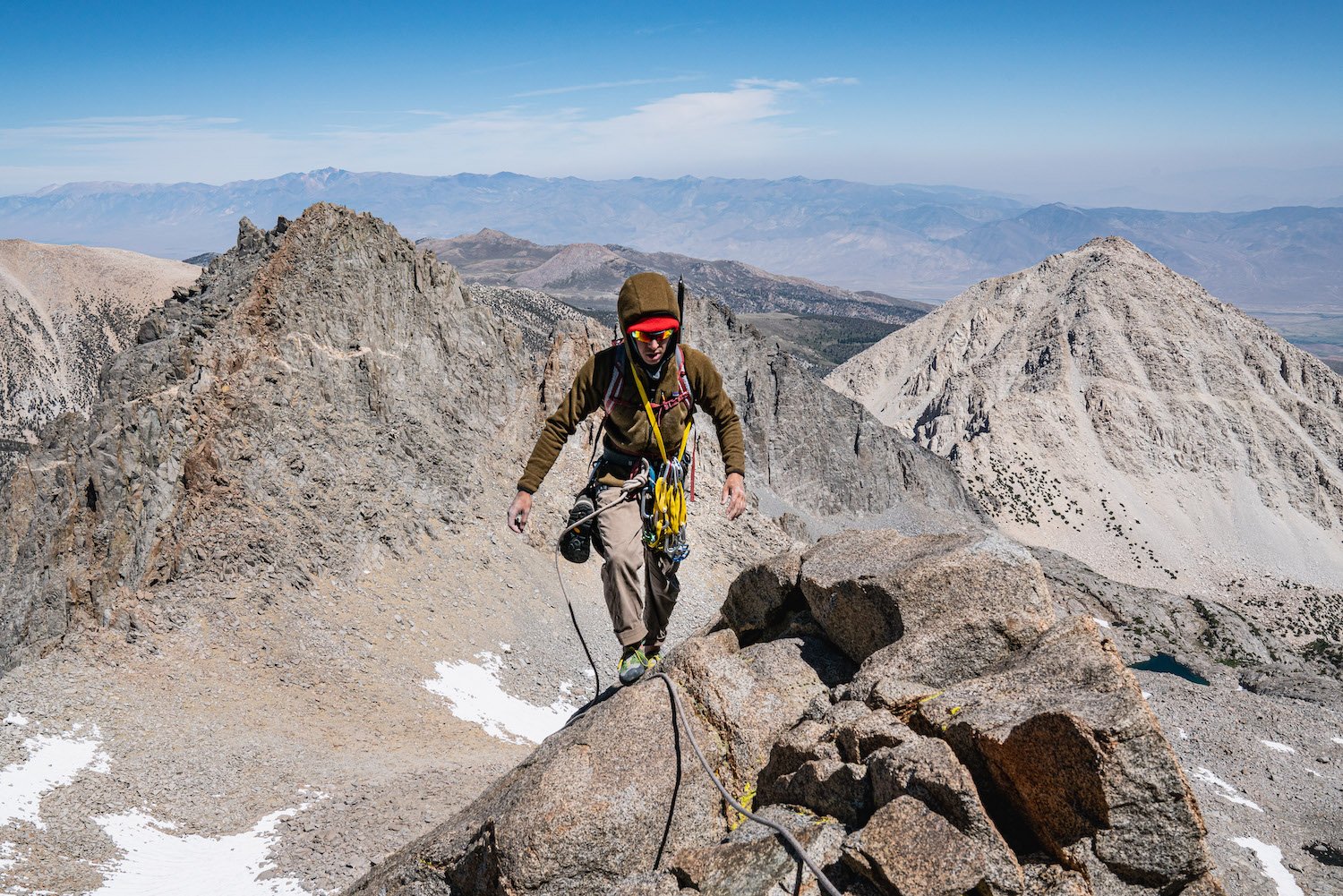Rock climbing is an exhilarating outdoor activity that challenges both body and mind, offering a unique experience of conquering natural rock formations. For beginners entering the world of rock climbing, understanding the different types of outdoor rock climbing routes is essential. Each route type presents its own set of challenges and techniques, making it crucial to grasp the nuances before venturing onto the rock. In this guide, we'll explore the various types of outdoor rock climbing routes, providing insights for novice climbers to start their journey safely and confidently.
Scott reaching the belay ledge during a multi-pitch alpine rock climb in the High Sierra. Photo by Dalton Johnson
1. Single Pitch Routes
Single pitch routes are ideal for beginners as they are shorter in height, typically ranging from 30 to 100 feet. These routes involve climbing from the ground to an anchor point at the top using a single rope length. Single pitch climbs are often found in climbing areas specifically designed for beginners, offering a controlled environment to practice essential climbing skills such as belaying, tying knots, and using climbing equipment.
2. Multi-Pitch Routes
Multi-pitch routes are longer and more challenging than single pitch routes, requiring climbers to ascend multiple sections or "pitches" to reach the summit. Each pitch is typically around the length of a single rope (about 50-60 meters), and climbers must belay each other from one anchor point to the next. Multi-pitch climbing demands not only climbing skills but also efficient communication and teamwork between climbers.
3. Trad (Traditional) Climbing Routes
Trad climbing involves placing protective gear, such as cams and nuts, into cracks and crevices of the rock to create anchor points as the climber ascends. Unlike sport climbing, where fixed bolts are pre-installed for protection, trad climbers must carry and place their own gear, making route selection and gear placement critical skills. Trad climbing routes often offer a more adventurous and varied climbing experience, with a focus on route finding and gear placement techniques.
4. Sport Climbing Routes
Sport climbing routes are equipped with fixed bolts drilled into the rock for protection, allowing climbers to clip their rope directly into the bolts as they ascend. This type of climbing emphasizes movement and technique rather than gear placement, making it popular among beginners and experienced climbers alike. Sport climbing routes are typically well-marked and graded for difficulty, providing climbers with a clear progression path as they improve their skills.
5. Bouldering
While not technically a "route" in the traditional sense, bouldering involves climbing short, challenging sequences of moves on large boulders or low rock formations without the use of ropes. Bouldering routes, known as "problems," often focus on powerful and dynamic movements, requiring climbers to solve intricate sequences using strength, balance, and technique. Bouldering areas are commonly found in outdoor settings and indoor climbing gyms, offering a social and dynamic climbing experience.
6. Top Rope Routes
Top rope climbing routes are protected by a rope that runs from the climber, up through an anchor at the top of the route, and back down to a belayer at the base. This setup provides a high level of safety for beginners, as the rope is already in place before the climber starts and offers continuous protection throughout the climb. Top rope routes are suitable for practicing climbing techniques, building confidence, and enjoying scenic views from the top.
Bouldering on Sunshine Wall in the Buttermilks of Bishop, CA. Photo by Dalton Johnson
As a beginner rock climber, familiarizing yourself with these different types of outdoor rock climbing routes is the first step towards a rewarding climbing experience. Start with single pitch routes to develop fundamental skills and gradually progress to multi-pitch climbs as your confidence and abilities grow. Whether you prefer the adventure of trad climbing, the precision of sport climbing, or the dynamic challenges of bouldering, each route type offers unique opportunities for exploration and growth in the world of outdoor rock climbing.








